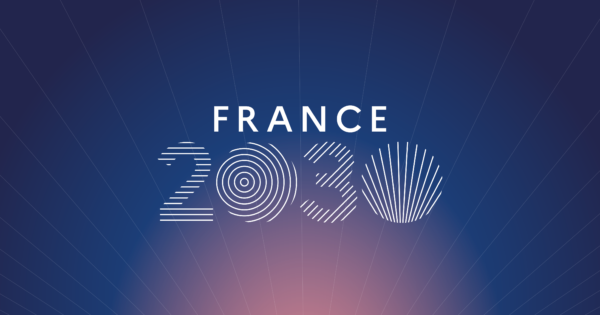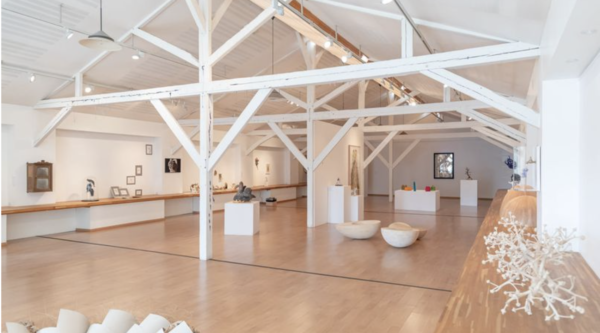
Appel à projets France 2030 « Alternatives vertes 2 »
Doté de 25 millions d’euros, ce dispositif vise à accélérer la transition écologique des entreprises culturelles, afin d’en faire un…

THE CHALLENGE: WHAT TO DO WITH LOST SPACES?
The lost spaces competition is a call for ideas to reframe how underused spaces in Calgary might be used. The aim is to address a particular challenge of public space–what to do with seemingly remnant pieces of public property. The challenge: what opportunities do lost spaces afford?
A ‘lost space’ is any space that remains under-utilized within our urban environment. They might be leftover pieces, a ghost of the planning past. Lost spaces are part of the public realm, rarely designed to function with both social and environmental benefit to the city.
You may consider a lost space as a passageway, a roundabout, space between two buildings, a highway shoulder, or tenants of the city’s history and memory. We’d like to ask you to dream, take risks and stretch what we think is possible.
“Cities are made, they are assemblies of parts, which is why I like playing scrabble which was invented by an architect. It starts in the middle, which is where cities start, it wanders out to the edge, and some of the goals at the edge are great.”
— Richard Wentworth via phone conversation on lost spaces, 9/17/14
The Lost Spaces competition is open to anyone including architects, artists, designers, engineers, and students. We’re looking for cross-disciplinary teams to collectively respond to the diverse challenges of design, social sustainability and low impact design improvements. Students and members of the public who wish to submit an idea are encouraged to team up with an artist, designer, planner or engineering professional for their proposal.
To adapt your entry to the local climate conditions, please note that Calgary has a prairie climate. It benefits from high sunshine hours but also experiences unpredictable weather at times. A winter Chinook might increase the temperature by 30 degrees Centigrade within a few hours. Please consult more detail about the local climate in our FAQ.
The competition is a call for alternatives improving the use, public realm and ecological value of a lost space. Responding to an area’s deficiency in the public realm, can lost space offer greater links and connectivity for people? How can a lost space connect fragments into corridors and attract biodiversity? How might they contribute to the management of stormwater? How can lost space be remembered and utilized? Is a lost space still “lost” if not used?
Judges will base their assessment on the following criteria:
A top prize and up to five (5) field prizes will be awarded. A shortlist of up to twelve (12) will be exhibited in the spring of 2015. Those shortlisted and not awarded a prize will receive a shortlist renumeration fee. An entry is not entitled to more than one prize. Only shortlisted projects will receive renumeration. Awards and renumeration will be granted only to projects considered by the jury to meet the formal regulations and the criteria.
The panel of five industry professionals will judge the submissions. They will select a shortlist of up to 12 of the most successful entries. Each of the shortlisted designs will be included in an exhibition in 2015, presented in collaboration with d.talks and WATERSHED+.
The competition is an anonymous submission process. A team of four individuals from d.talks and two from WATERSHED+ will manage the competition process, numbering entries and ensuring all identifying materials are removed prior to judging. The jury will select a winning entry from the shortlisted selection. The advisory panel will each select an additional winner from the shortlist that best responds to the challenges faced in their department’s concern for lost spaces.
“Compared to the territories submitted to the control and exploitation by man, the Third Landscape forms a privileged area of receptivity to biological diversity. Cities, farms and forestry holdings, sites devoted to industry, tourism, human activity, areas of control and decision permit diversity and, at times, totally exclude it.”
— Gilles Clement, writing on the Third Landscape
We are seeking designs that re-envision a remnant public space. The call is for alternatives improving the use, public realm and ecological value of a lost space. Submissions may be based upon one of the below conditions, or may identify an independent space qualifying as lost. Designs must adapt to the climatic conditions of Calgary. Please visit our FAQ for further detail.
Sample Site Conditions:
Entrants will be asked to submit the following:
The Lost Spaces competition is open to anyone including architects, artists, designers, engineers, and students. We’re looking for cross-disciplinary teams to collectively respond to the diverse challenges of design, social sustainability and low impact design improvements. Students and members of the public who wish to submit an idea are encouraged to team up with an artist, designer, planner or engineering professional for their proposal.
To adapt your entry to the local climate conditions, please note that Calgary has a prairie climate. It benefits from high sunshine hours but also experiences unpredictable weather at times. A winter Chinook might increase the temperature by 30 degrees Centigrade within a few hours. Please consult more detail about the local climate in our FAQ.
By submitting entries to the Lost Spaces Ideas Competition, participants agree to the following:
Submissions must be original work and not previously published or submitted to another competition. By entering the competition, participants accept that their submission may be used to promote the Lost Spaces Competition prize, and agree to have their submission displayed online and in print.
No member of the Jury, the organizing committee, nor the respective professional partners of the foregoing are eligible to submit to the competition.
Entries that do not comply with the formal regulations and which have not been submitted by the closing date (March 30, 2015) will not be taken into consideration.
The ownership and copyright of all entry materials submitted remains with their respective creators. However, by participating in the competition, all entrants authorize the organizers (d.talks and WATERSHED+) the right to display, publish and otherwise exhibit all materials submitted in magazines, books, websites and other media to be determined. Designers will be fully-credited when their work is used.
The jury reserves the right to not award prizes for entries not meeting the criteria defined.
No partner, associate, or employee of any Jury member may participate in the Competition.
“The classic ideal of the theatrum mundi attempted to convey one union of aesthetics and social reality. Society is a theater, and all men are actors.”
— Richard Sennett, The Fall of Public Man, 1977
Produced by: Design Talks Institute (d.talks)
Supported by: WATERSHED+ and The City of Calgary
Design Talks Institute (d.talks) is a grassroots non-profit organization dedicated to fostering collaborative and engaging public conversation about design and the built environment in Calgary. Find more at dtalks.org
WATERSHED+ is a part of the City of Calgary’s Utilities & Environmental Protection Public Art program. Find more at watershedplus.ca
Doté de 25 millions d’euros, ce dispositif vise à accélérer la transition écologique des entreprises culturelles, afin d’en faire un…
Une occasion unique pour les esprits critiques de s'engager dans des projets transformateurs, répondant aux défis urgents posés par le…
Cet appel s’adresse à l’ensemble des artistes, chercheur·euse·s, professionnel·le·s, individuels ou collectifs évoluant dans tous les champs de la création…

